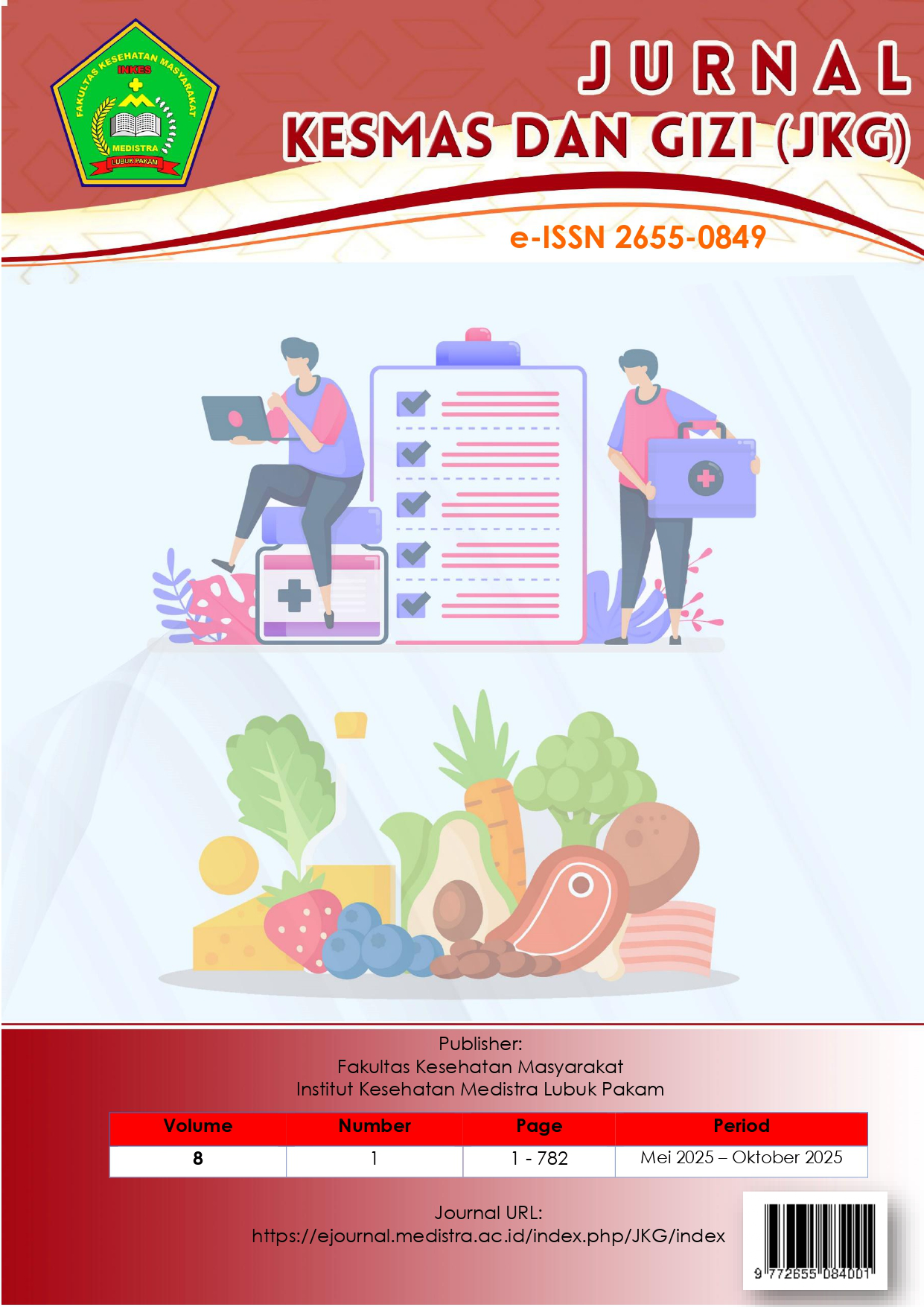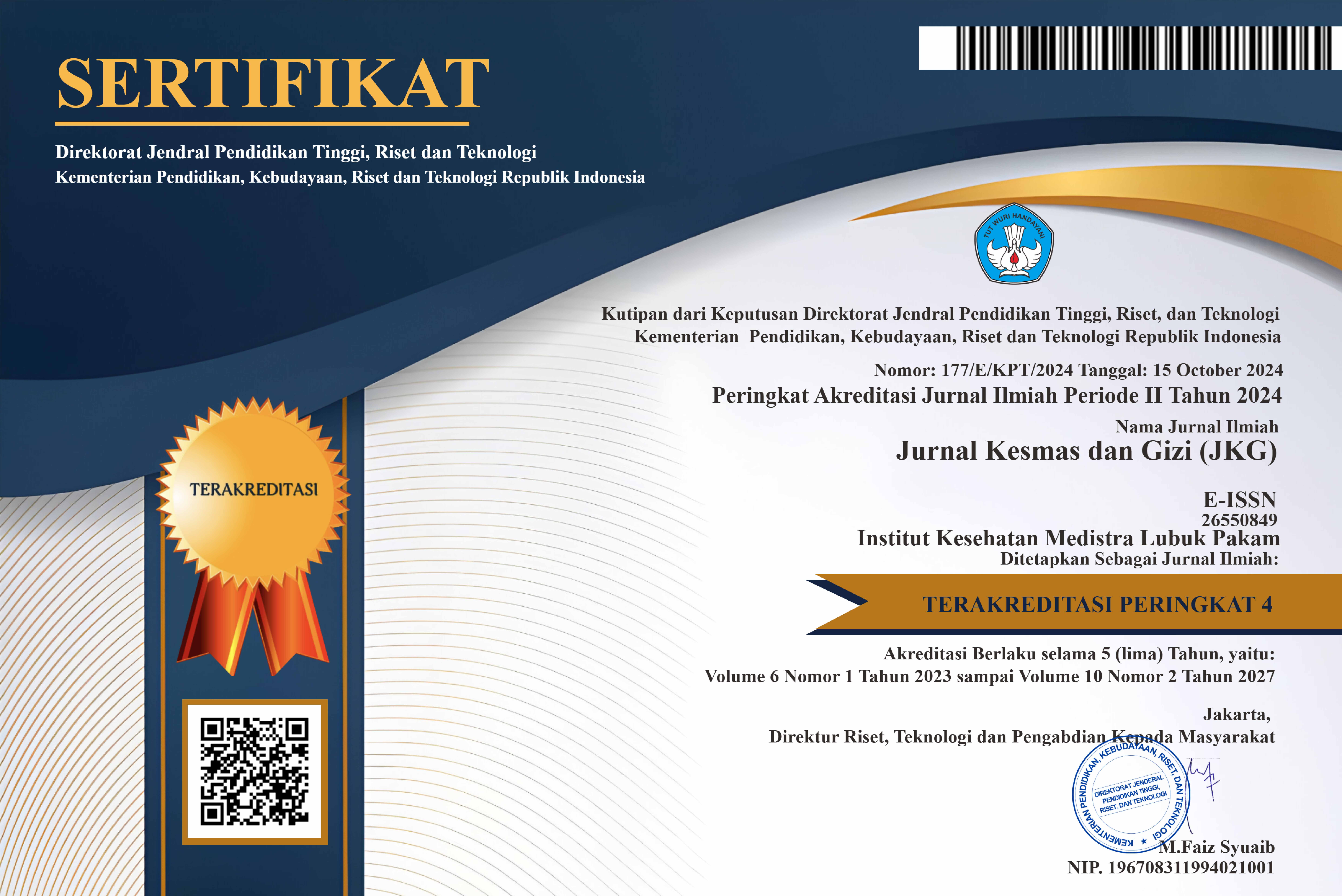A Comparative Study of the Effectiveness of Art Therapy and Play Therapy in Developing Cognitive Abilities among Preschool Children with a History of Stunting
DOI:
https://doi.org/10.35451/2q2xzz88Keywords:
Art Therapy, Play Therapy, Cognitive ability, Stunting, Preschool childrenAbstract
Stunting is a serious nutritional problem that adversely affects children's physical and cognitive development. This study aimed to compare the effectiveness of Art Therapy and Play Therapy in enhancing cognitive abilities of preschool-aged children with a history of stunting in the Lawe Sumur Public Health Center working area. A quasi-experimental design with a control group was employed involving 80 preschool children randomly assigned to either the Art Therapy group (n = 40) or the Play Therapy group (n = 40). The intervention consisted of 12 sessions over six weeks, and cognitive abilities were assessed using the Preschool Cognitive Ability Scale (SKKP-15) before and after the intervention. Results indicated that Art Therapy was more effective than Play Therapy in improving cognitive abilities. Children receiving Art Therapy were 3.4 times more likely to achieve high cognitive ability compared to those receiving Play Therapy (p = 0.02; OR = 3.444; 95% CI: 1.310–9.058). Family environment factors, including maternal education level, employment status, family size, frequency of home stimulation, and quality of sleep, also influenced cognitive development. Nonetheless, Art Therapy consistently produced positive effects, even for children from families with limited stimulation and lower parental education. In conclusion, Art Therapy is an effective, practical, and inclusive non-pharmacological intervention for supporting the cognitive development of preschool children with a history of stunting. These findings provide a basis for health professionals, educators, and policymakers to integrate arts-based approaches into child development intervention programs in community health settings.
Downloads
References
[1] L. Rahayuwati et al., “Exploring the relationship between maternal education , parenting practice , and stunting among children under five : Findings from a cross-sectional study in Indonesia,” pp. 1–11, 2025.
[2] M. K. Maab, “The Effect of Play Therapy on Children ’ s Anxiety in Hospitalization : Literature Review,” vol. 3, no. 1, pp. 1–8, 2021.
[3] J. L. Hudson et al., Interventions for Young Children ’ s Mental Health : A Review of Reviews, vol. 26, no. 3. Springer US, 2023. doi: 10.1007/s10567-023-00443-6.
[4] C. A. K. Qurotul Ainin, Yunus Ariyanto, “HUBUNGAN PENDIDIKAN IBU, PRAKTIK PENGASUHAN DAN SANITASI LINGKUNGAN DENGAN KEJADIAN STUNTING PADA BALITA DI DESA LOKUS STUNTING WILAYAH KERJA PUSKESMAS PARON KABUPATEN NGAWI Qurotul Ainin 1* ,Yunus Ariyanto 1 , Citra Anggun Kinanthi 1,” vol. 11, 2023.
[5] Y. P. S. Hermalindaa, Deswitaa, “The Effect of Play Therapy on Hospitalization Anxiety Among Pre-School Children (3-6 Years),” vol. 21, no. 1, pp. 106–111, 2025.
[6] R. D. Wulandari and F. E. , Agung Dwi Laksono, Yuly Astuti, Ratu Matahari, Nikmatur Rohmah, Rohani Budi Prihatin, “Stunting Among Low-Income Families in Indonesia : Is Mother ’ s Employment Stunting Among Low-Income Families in Indonesia : Is Mother ’ s Employment a Risk Factor ?,” no. June, 2025, doi: 10.34172/jrhs.7450.
[7] and L. A.-G. María José Godino-Iáñez, María Begoña Martos-Cabrera, Nora Suleiman-Martos, José Luis Gómez-Urquiza, Keyla Vargas-Román, María José Membrive-Jiménez, “Play Therapy as an Intervention in Hospitalized Children : A Systematic Review,” pp. 1–12.
[8] X. Weng, “Analysis of the Impact of Parenting Styles on Children,” vol. 0, pp. 116–121, 2024, doi: 10.54254/2753-7064/63/2024.17963.
[9] H. Trong, S. R. Zubrick, and F. Mitrou, “Journal of Economic Behavior and Organization The effects of sleep duration on child health and development,” J. Econ. Behav. Organ., vol. 221, no. June 2023, pp. 35–51, 2024, doi: 10.1016/j.jebo.2024.03.016.
[10] N. H. T. Verdellen-krauwel, N. Frielink, A. J. C. Prick, and A. P. A. M. Willems, “Creative Arts Therapies , Psychomotor Therapy , and Play Therapy for People with Severe Intellectual Disabilities and Challenging Behaviour : A Scoping Review of Interventions and Outcomes,” MDPI, pp. 1–17, 2025, doi: https://doi.org/10.3390/disabilities5040084.
[11] W. Huang, H. Li, W. Jiang, Y. Tian, and G. Qin, “The Application of Painting in the Intervention of Children ’ s Psychological Issues in China : A Narrative Review,” Iran J Public Heal., vol. 54, no. 7, pp. 1331–1338, 2025, [Online]. Available: http://ijph.tums.ac.ir
[12] C. E. James et al., “Cognitive enrichment through art : a randomized controlled trial on the effect of music or visual arts group practice on cognitive and brain development of young children,” BMC Complement. Med. Ther., vol. 1, pp. 1–22, 2024, doi: 10.1186/s12906-024-04433-1.
[13] Y. Xie, “An overview of the integration and development trends between arts and psychotherapy,” Front. Psychol., no. July, pp. 1–24, 2025, doi: 10.3389/fpsyg.2025.1617700.
[14] L. Bosgraaf, M. Spreen, K. Pattiselanno, and S. Van Hooren, “Art therapy for Psychosocial Problems in Children and Adolescents : A Systematic Narrative Review on Art Therapeutic Means and Forms of Expression , Therapist Behavior , and Supposed Mechanisms of Change,” Front. Psychol., vol. 11, no. October, 2020, doi: 10.3389/fpsyg.2020.584685.
[15] B. S. Nayak, B. Unnikrishnan, Y. N. Shashidhara, and S. C. Mundkur, “Effect of nutrition intervention on cognitive development among malnourished preschool children : randomized controlled trial,” Sci. Rep., pp. 1–8, 2023, doi: 10.1038/s41598-023-36841-7.
[16] Y. Xiong, X. Hu, J. Cao, and L. Shang, “A Predictive model for stunting among children under the age of three,” Front. Pediatr., no. September, pp. 1–11, 2024, doi: 10.3389/fped.2024.1441714.
[17] C. E. Strang, “Art therapy and neuroscience : evidence , limits , and myths,” Front. Psychol., no. October, pp. 1–6, 2024, doi: 10.3389/fpsyg.2024.1484481.
[18] K. Munawar, F. Mukhtar, M. Roy, and N. Majeed, “A systematic review of parenting and feeding practices , children ’ s feeding behavior and growth stunting in Asian countries,” Psychol. Health Med., vol. 29, no. 10, pp. 1705–1752, 2024, doi: 10.1080/13548506.2024.2421461.
[19] N. B. Conolly, M. Hoosain, G. Rautenbach, and N. A. Plastow, “Art Group Interventions for Children With Learning Differences : A Systematic Review,” 2 OTJR Occup. Ther. J. Res., pp. 1–13, 2025, doi: 10.1177/15394492251340378.
[20] O. Cankaya, N. Rohatyn-martin, J. Leach, and K. Taylor, “Preschool Children ’ s Loose Parts Play and the Relationship to Cognitive Development : A Review of the Literature,” J. Intell., 2023.
[21] A. S. Seitenov, “Development of Social Intelligence in Preschool Children by Art therapy : Case Study of Oyna Educational Centre,” Int. J. Learn. Teach. Educ. Res., vol. 19, no. 5, pp. 276–288, 2020, doi: https://doi.org/10.26803/ijlter.19.5.17.
Downloads
Published
Issue
Section
License
Copyright (c) 2025 Yusnika Damayanti, Devi Annisa Marpaung

This work is licensed under a Creative Commons Attribution 4.0 International License.
Copyright in each article is the property of the Author.


























